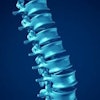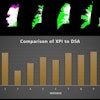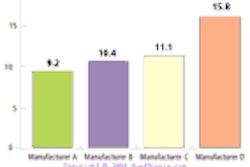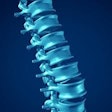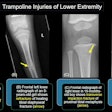SAN FRANCISCO - In high-risk infants with congenital heart disease, echocardiography is the imaging gold standard. But when echocardiographic results are inconclusive, clinicians should consider CT angiography (CTA) before moving on to more invasive procedures, according to a presentation at the American Academy of Pediatrics (AAP) meeting.
"Pulmonary venous (PV) anomalies are common in children with congenital heart disease," said Dr. Russell Hirsch in a talk Saturday. "They may be associated with heterotaxy or other kinds of complex syndromes."
These types of defects inevitably require surgical repair. But "prior to surgical intervention, careful anatomic definition is required. (Echocardiography) is rapid, noninvasive, usually requires limited sedation, and gives extra intracardiac assessment, as well as the important extracardiac vascular assessment," added Hirsch, who is from Cincinnati Children's Hospital Medical Center in Ohio.
However, echocardiography does have its disadvantages, including operator dependence and sophisticated technical requirements (widows).
"The question is what should we do when echo is inconclusive in helping us find these pulmonary venous anomalies? In most institutions, cardiac catheterization has been the second-line test," Hirsh said. "It gives excellent anatomic definition, and it gives us important -- but not always necessary -- functional assessment in critically ill newborn babies." The downside of cardiac catheterization includes a severe risk of complications (vascular damage, arrhythmias), a need for general anesthesia, and radiation exposure.
Instead, Hirsch's group chose CTA as an alternative to cardiac catheterization when echocardiography proved inconclusive. The advantages of CTA include rapid volume acquisition, brief scan times, and image resolution that can be greatly enhanced with 3D reformatting, he said.
For the retrospective study, all CTA exams performed in infants weighing less than 7 kg were reviewed. The subjects were placed into two categories:
- Group A: normal PV return on echo; CTA indicated for other reason
- Group B: abnormal PV return on echo; incomplete definition; CTA as alternative to cardiac cath
In both groups, two-dimensional axial images were acquired on CT, and underwent 3D reformatting (Vitrea 2, Vital Images, Plymouth, MN). Still-frame and AVI movie loops were also acquired. Nonionic contrast was injected at mean dose of 1.8 mL/kg. The scan duration time was six seconds. All the patients safely underwent limited sedation; only one required general anesthesia, Hirsch said.
The images were read independently by a radiologist (co-author Dr. Janet Strife) and a cardiologist (co-author Dr. William Gottliebson). Group A results were compared with echo; group B results were evaluated intraoperatively, or at catheterization.
Echocardiography revealed normal PV return in 16 patients and abnormal PV return in six patients (median age 2.6 months). On CTA, normal PV return was confirmed with echo in all patients in group A.
In group B, there were two cases of partial anomalous PV return (pulmonary stenosis and sinus venosus atrial septal defect) and total anomalous PV return (two to posterior confluence, one infracardiac, one combined infracardiac and supracardiac) in four patients.
The most common indication for CTA was arch-related anomalies (12 patients), followed by pulmonary artery anomalies and airway compression. The diagnoses were confirmed at cardiac catheterization for pulmonary valve dilatation and/or at surgery.
"All abnormal pulmonary veins were confirmed. There were no additional abnormal findings at surgery to add to the CTA diagnosis," Hirsch said. In particular, "the 3D movie loops give excellent spatial orientation for surgical planning. Good surgical repair was affected."
CTA was accurate in defining PV anatomy in a wide range of clinical situations, and can be performed safely and rapidly in a high-risk population, Hirsch concluded.
"We strongly believe that echocardiography should remain the first-line, noninvasive imaging technique in this population," he said. "But CTA should certainly be considered if the diagnosis remains elusive, and prior to taking the child to cardiac catheterization."
Hirsch acknowledged that the study did have limitations, including the applicability of CTA. "These findings were achieved in the setting of a tertiary care pediatric cardiology center, and may not be applicable in other settings," he said.
Session moderator Dr. Frank Galioto expressed two concerns with using CTA: the significant radiation dose and the necessity of using gating to obtain accurate images.
"Radiation is not to be underestimated, but this is a population of patients who would all go to cardiac catheterization," Hirsch replied. "In (16-detector CT) scanners, the image acquisition is extremely quick, one-and-a-half to two seconds for a neonatal thoracic image.... When we compare this to an average cardiac catheterization in a neonate, bear in mind that cardiac catheterization is 20 minutes.... The radiation dose that we've measured (with CTA) is roughly half of that with cardiac catheterization."
As for gating, Hirsch said his group used a protocol based on patient weight, heart rate, and anatomy, to obtain the best images. They also have found success using a breath-hold technique without much fallout because of motion, he added.
By Shalmali Pal
AuntMinnie.com staff writer
October 12, 2004
Related Reading
Part III: Imaging the pediatric patient: the use of CT in pediatric imaging, May 7, 2004
MRI delineates complexities of preterm infant brain, April 30, 2004
Copyright © 2004 AuntMinnie.com
